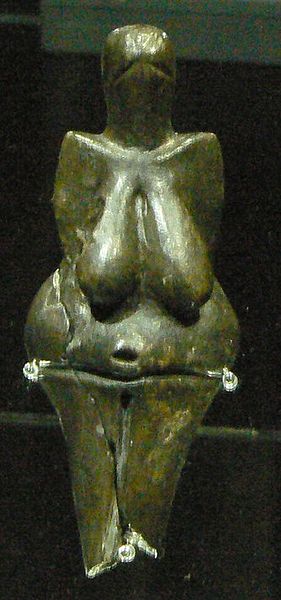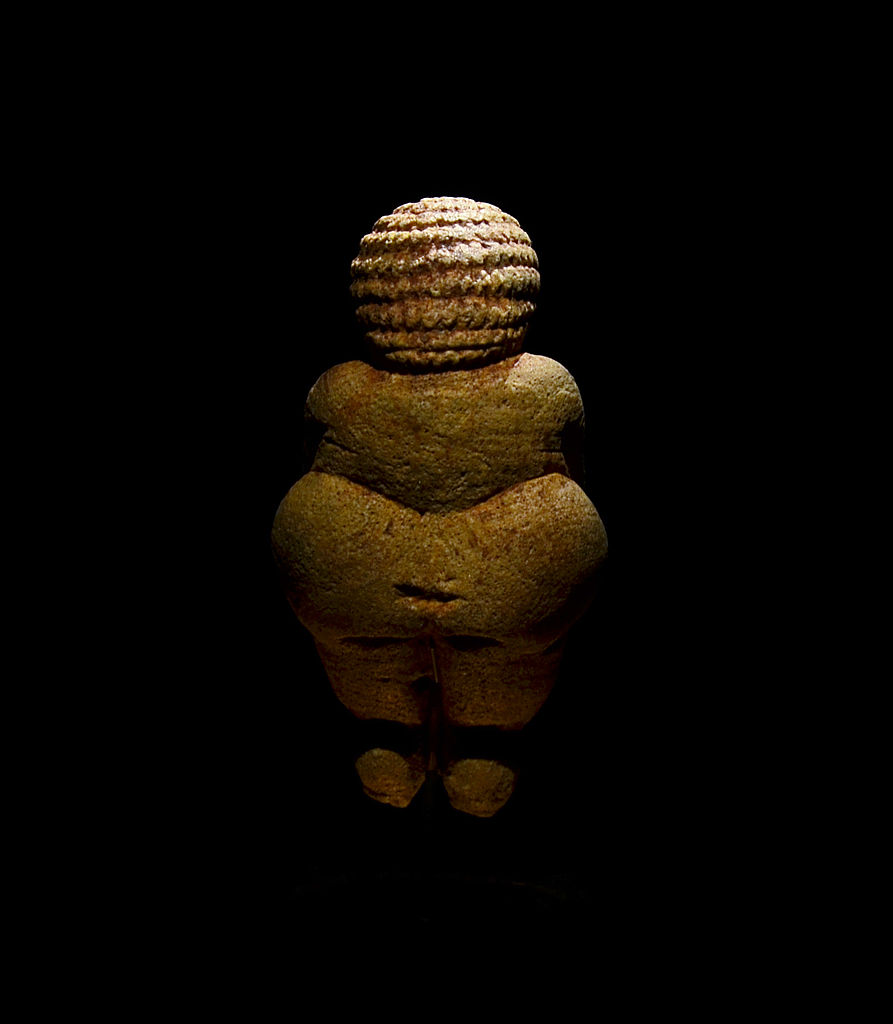
The most well-known work of prehistoric sculpture today is likely the Venus of Willendorf. Call it what you will – the “Woman” of Willendorf, if you must – it is a classic work of prehistoric craftsmanship that is an object of curiosity as well as amazement to those who see it for the first time.
Carved out of limestone around 28,000-25,000 B.C., the voluptuous nude woman was erroneously given the title of Venus after its discovery in the early twentieth century. As a Paleolithic work, we cannot truly understand what the purpose of it was or even the ideas that it was meant to communicate, but we can at least understand what it represented for prehistoric people.
With its exaggerated body parts – large belly, thighs, breasts – it’s a peculiar depiction of an unknown woman which must have struck prehistoric minds much in the same way that they strike the minds of modern viewers who see it for the first time. What was the point of it all? Was it meant to be an object of humor? Was it all an artistic joke? Or was there something else going on? I think if we approach the work as the product of a person who made conscious decisions to communicate certain ideas or accomplish a certain function, the shroud of mystery dissipates to a degree.

The conspicuously emphasized and de-emphasized body parts help to explain the nature of this work. The breasts, girth, and even genital region of the woman are focal points of the work, whereas the head and tiny arms take on clear secondary roles. The arms are extremely slender and fold over the breasts, and unless you look for them you might miss them altogether. The feet have either been knocked off or were omitted altogether. It’s worth noting that other Venus figurines that have been found echo the Willendorf Venus’ most important characteristics. Both the Venus of Dolní Věstonice (c. 24,000 B.C.) and the Venus of Hohlefels (c. 33,000 B.C.) resemble the Venus of Willendorf in some obvious ways. It’s also worth nothing that the Venus of Hohlefels looks like a rotisserie chicken, but I digress.

In addition to ensuring survival by sheer numbers, sufficient procreation would have increased the likelihood of the success of a community. From defense of one’s tribe against other tribes, to hunting, to gathering, to creating essential clothing and tools, greater numbers of people would have increased the probability that a tribe could thrive. If a tribe reproduced at a replacement rate alone, it might be able to survive for some time. But thriving would have required reproduction at an even greater rate.
It strikes me that in modern society, the value of procreation at a macro level is almost nil. We take it for granted that procreation will happen, and therefore we devalue its importance. We do this at our peril. The West has become ripe for this kind of devaluing of procreation for some time, and the bad fruits of this mindset are looming on the horizon. All over Europe, feeble birthrates are threatening the future stability of nations. Russia is one such country where low birth rates are threatening its long-term prospects. Germany is also threatened, particularly after it dipped below Japan’s birth rate to have the lowest rate in the world in 2015. Other countries, such as Spain, Italy, and Portugal, aren’t well off, either.

As fewer children are born, fewer people are able to enter the future workforce to support a nation’s aging population that can no longer work. To remedy this situation, nations may need to allow more and more immigrants into the workforce, but this creates problems of its own. As Europe experiences its immigration surge, we can expect to read about more and more cultural clashes as the demographics of many countries dramatically change.
The solution to these looming problems can be found in the Venus of Willendorf. More accurately, demographic problems can be solved by placing a premium on procreation. For far too long, developed countries have viewed it as an almost superfluous social experiment rather than an integral component of civilization. If we can step away from this modernist mindset, we might be able to understand something that even the most primitive people could.



